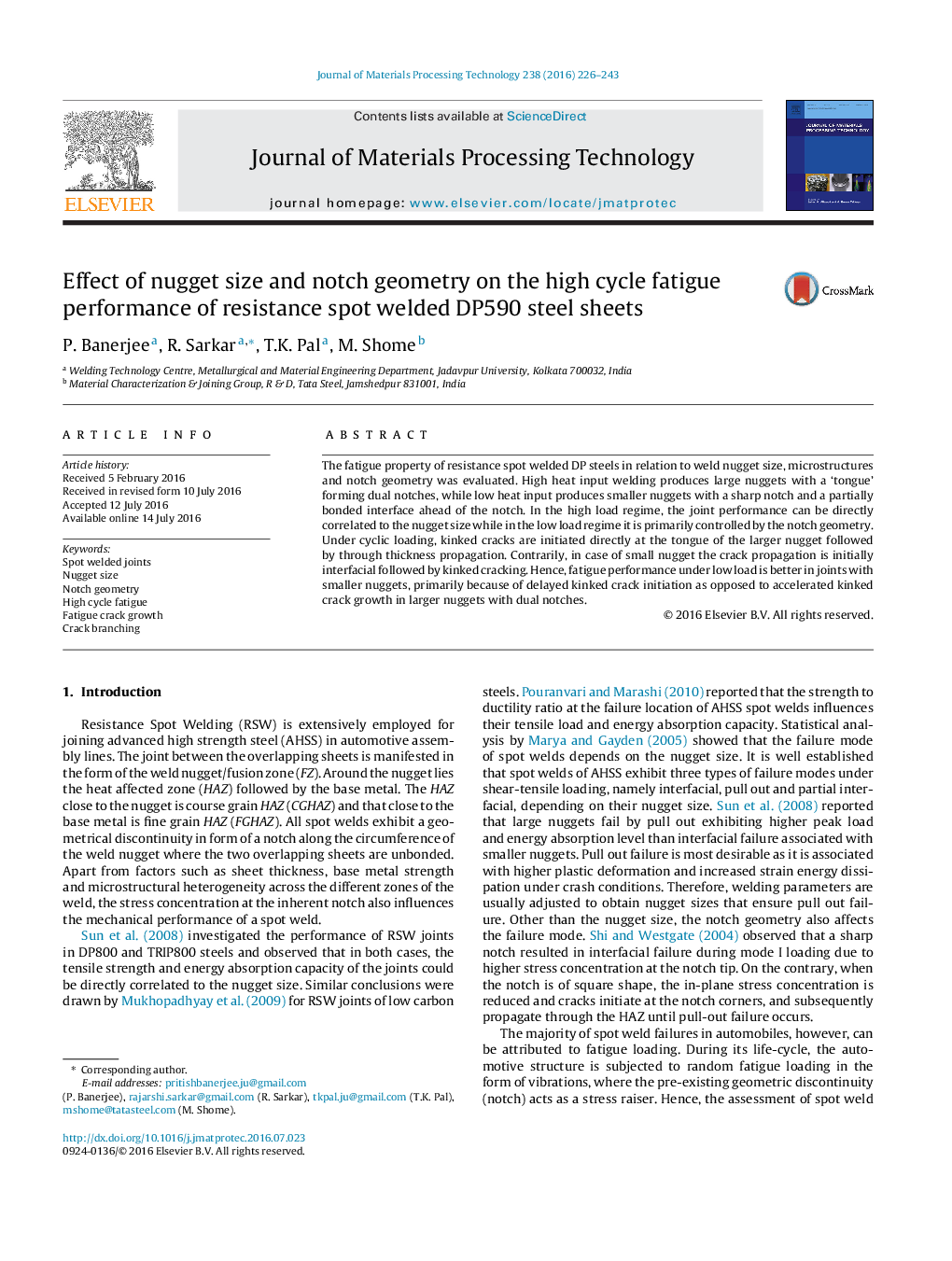| Article ID | Journal | Published Year | Pages | File Type |
|---|---|---|---|---|
| 7176654 | Journal of Materials Processing Technology | 2016 | 18 Pages |
Abstract
The fatigue property of resistance spot welded DP steels in relation to weld nugget size, microstructures and notch geometry was evaluated. High heat input welding produces large nuggets with a 'tongue' forming dual notches, while low heat input produces smaller nuggets with a sharp notch and a partially bonded interface ahead of the notch. In the high load regime, the joint performance can be directly correlated to the nugget size while in the low load regime it is primarily controlled by the notch geometry. Under cyclic loading, kinked cracks are initiated directly at the tongue of the larger nugget followed by through thickness propagation. Contrarily, in case of small nugget the crack propagation is initially interfacial followed by kinked cracking. Hence, fatigue performance under low load is better in joints with smaller nuggets, primarily because of delayed kinked crack initiation as opposed to accelerated kinked crack growth in larger nuggets with dual notches.
Related Topics
Physical Sciences and Engineering
Engineering
Industrial and Manufacturing Engineering
Authors
P. Banerjee, R. Sarkar, T.K. Pal, M. Shome,
